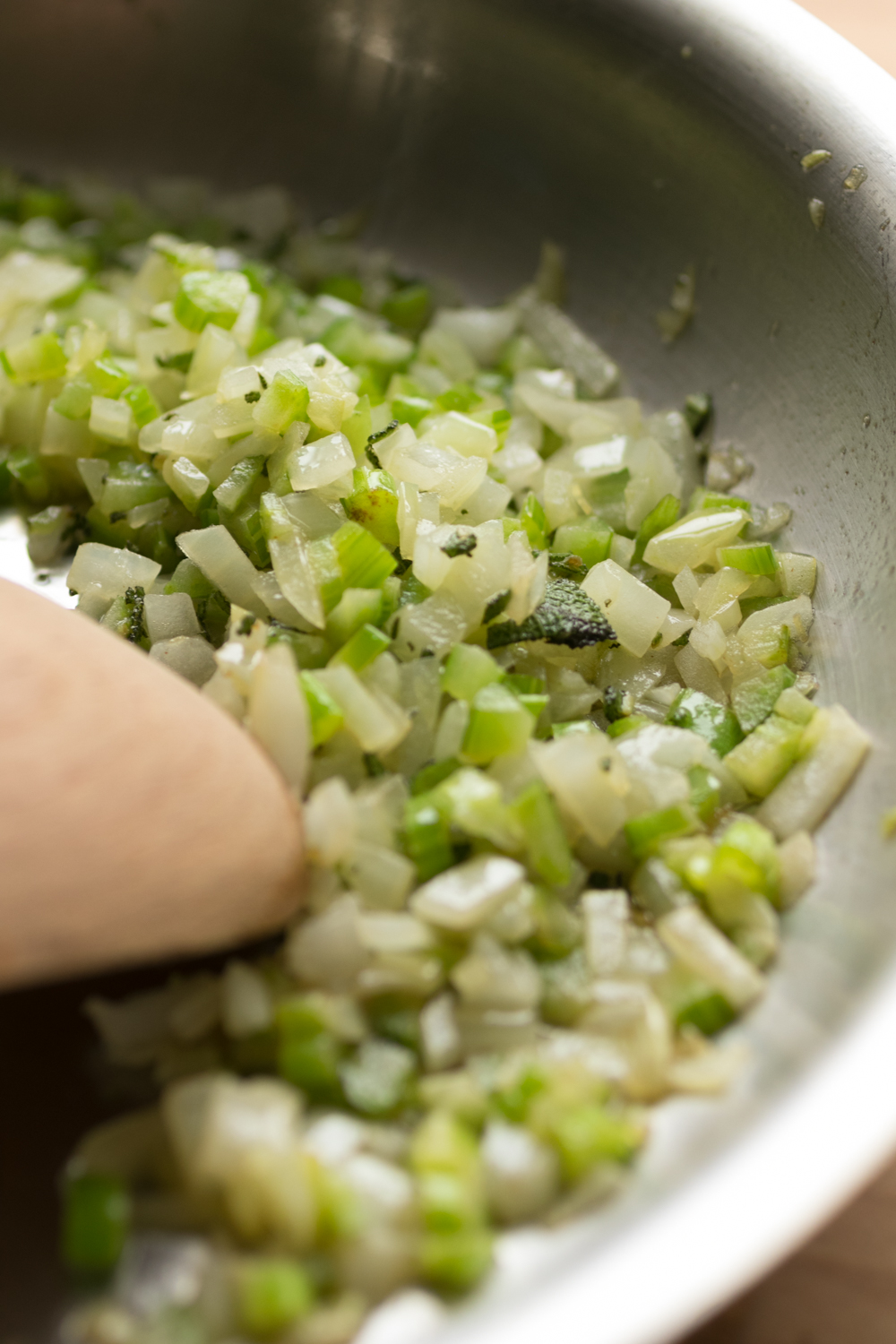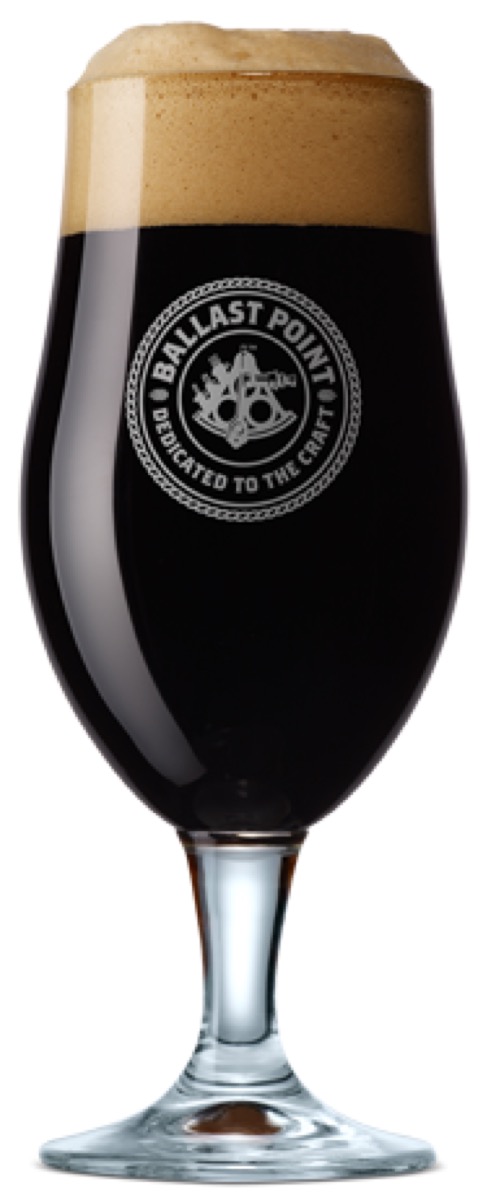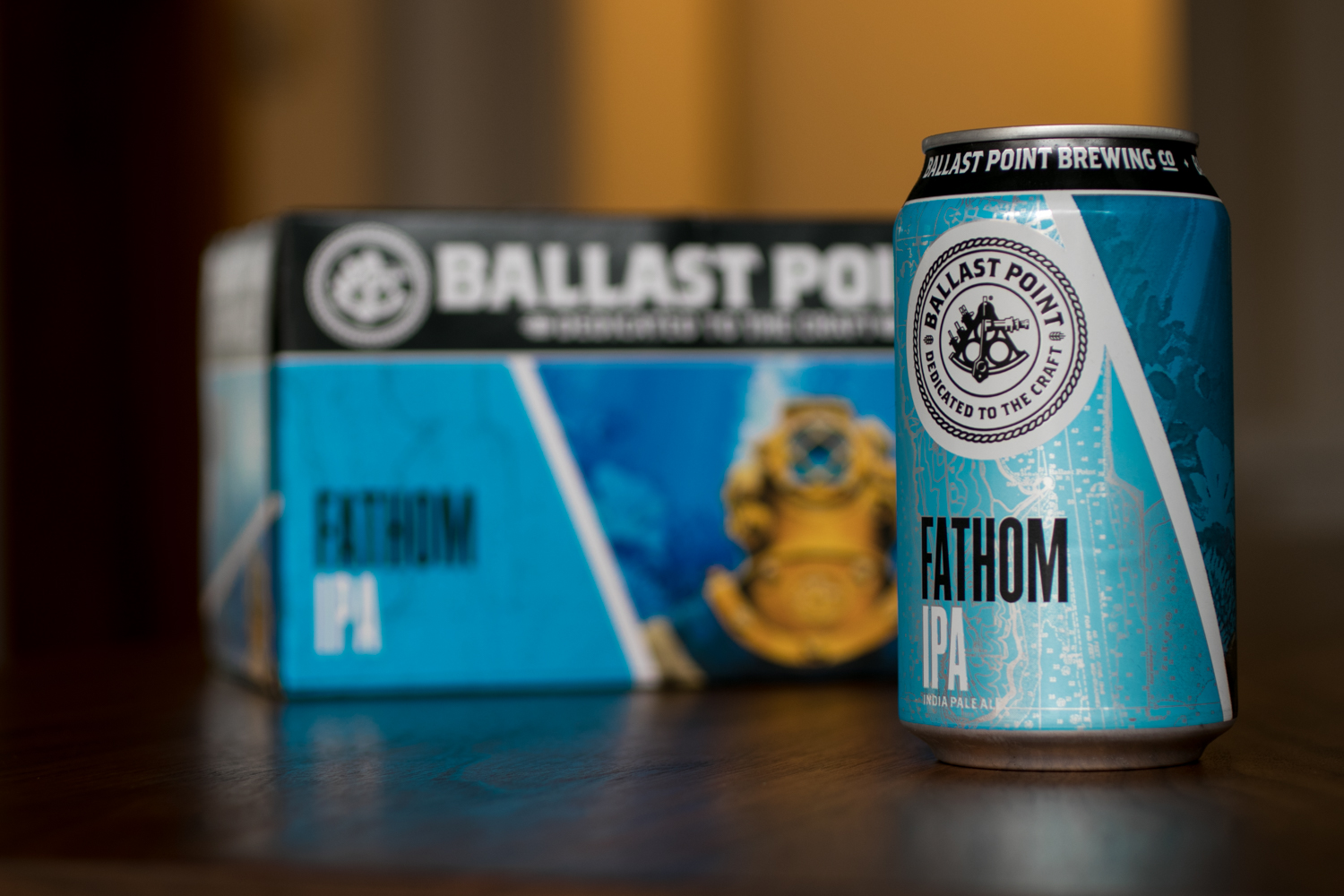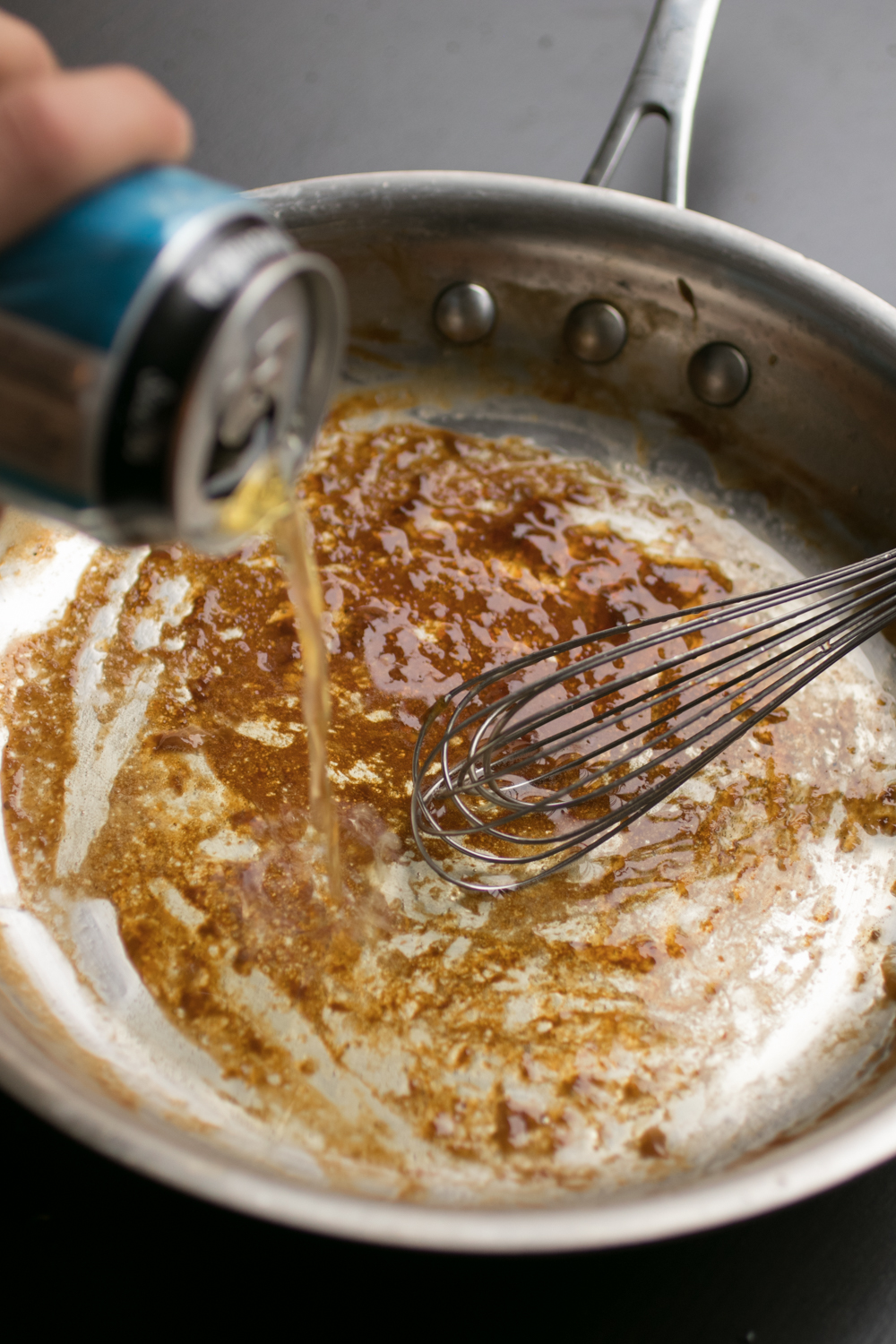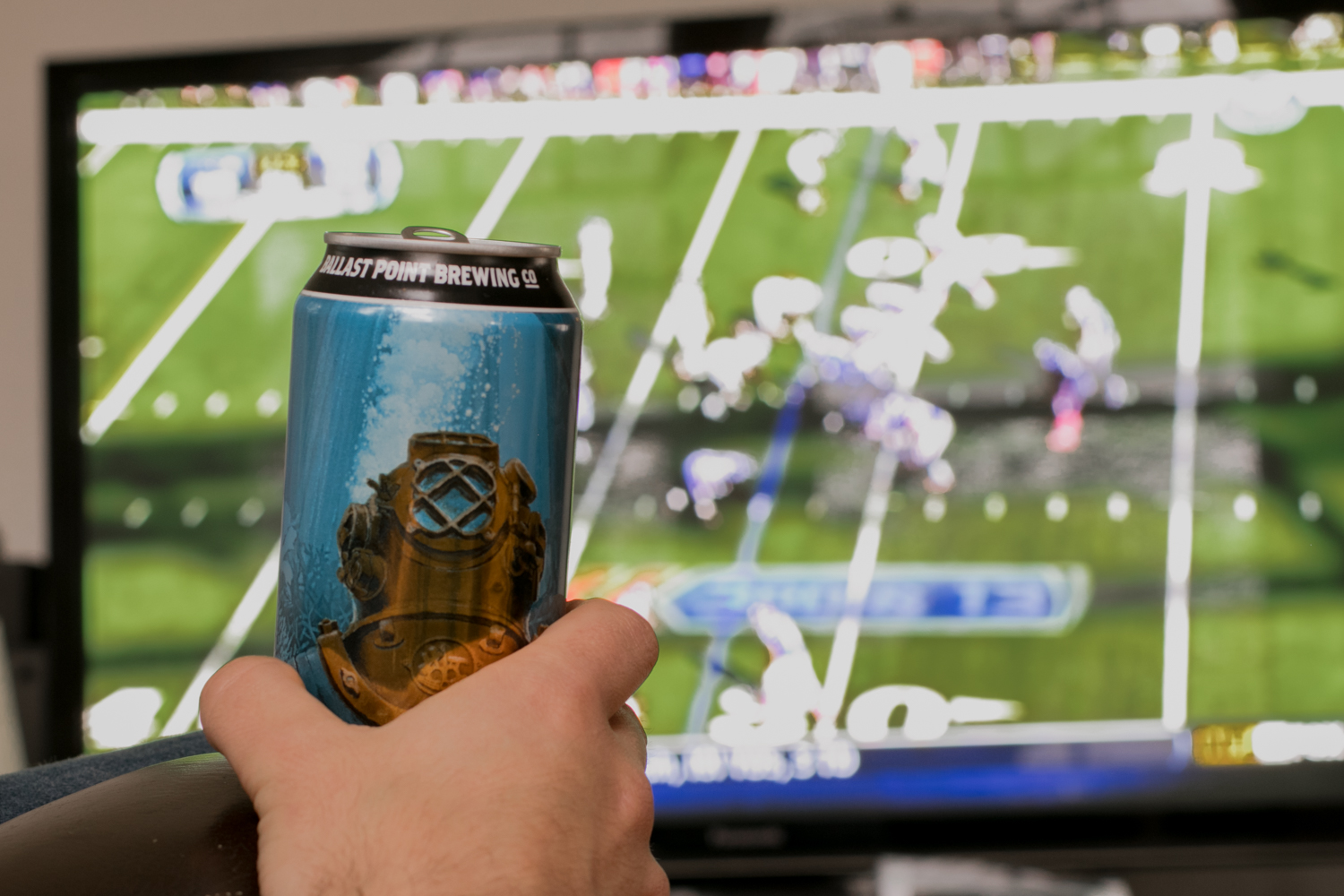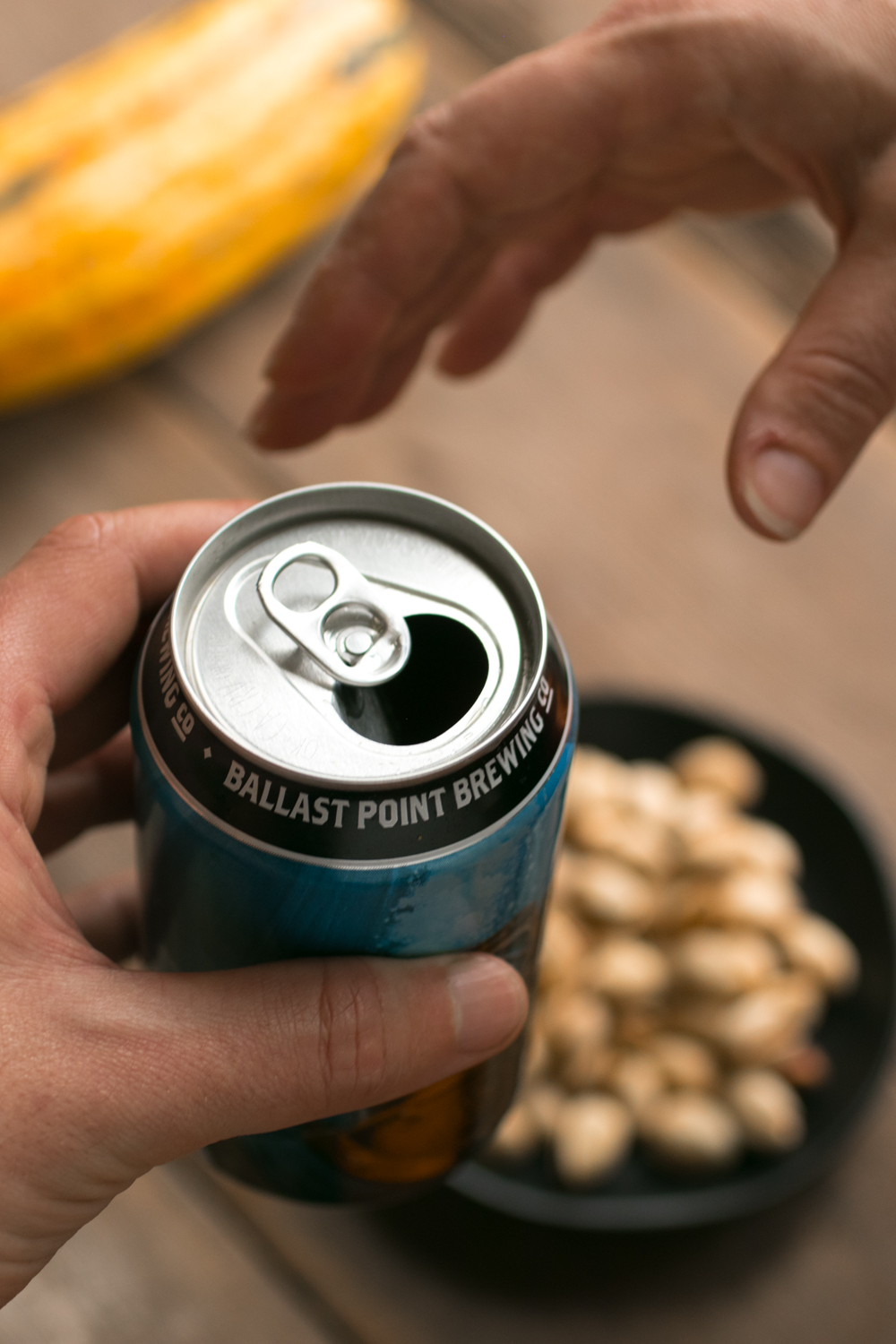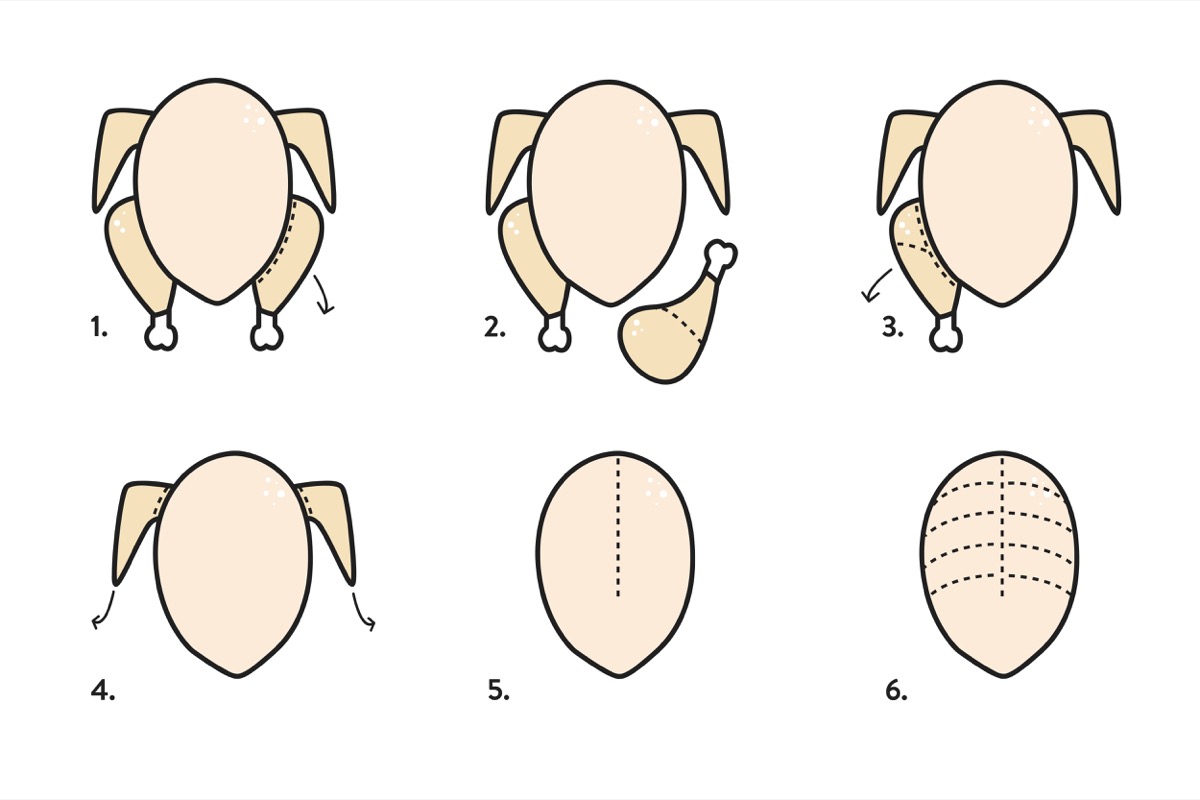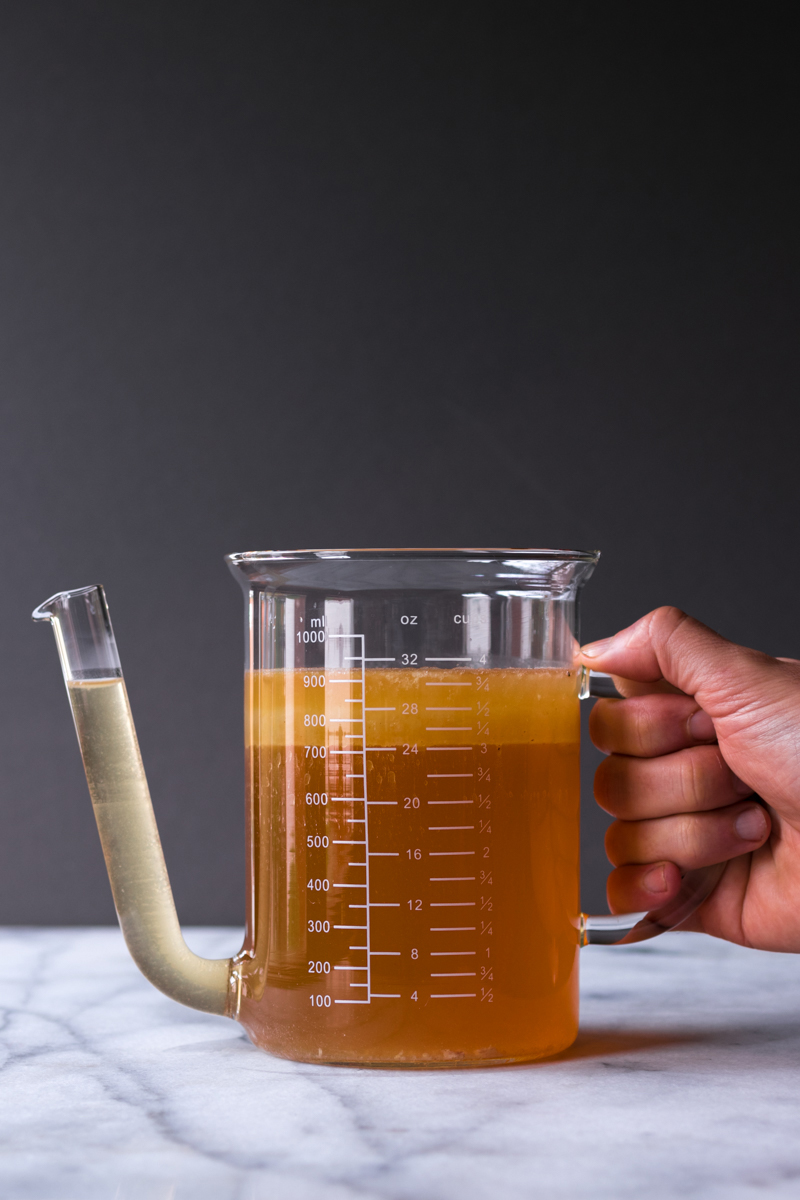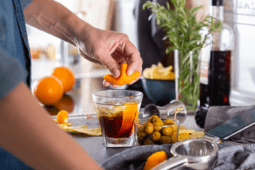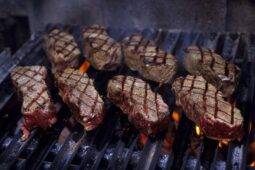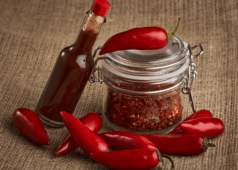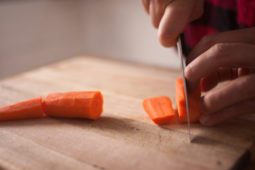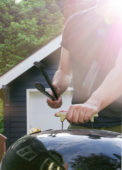27 Essential Tips to Totally Nail Thanksgiving This Year
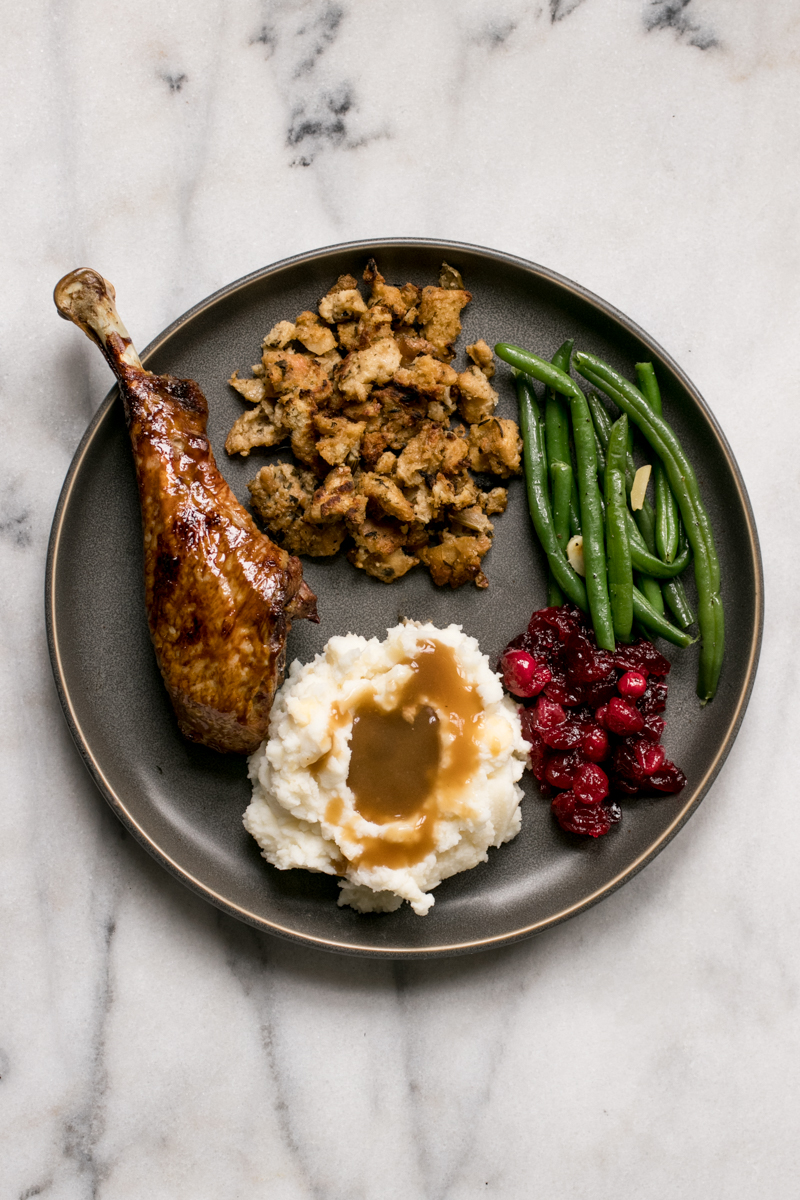
Thanksgiving has two of my favorite English words in it, so it's not surprising it's among my favorite holidays of the year. It's infinitely adaptable, both in terms of what you eat, and what you do during the holiday. Plus, it's a long weekend off during a period of the year when most of us sorely need it (a break from the cold, grey skies of early winter). This is the holiday for people who wish they could hibernate. For people who want to sit in their house all day, surrounded by good friends, family, and food. Who are thankful for what they have, and want to share it with others who might not be so lucky.
So I'm excited to share a heaping helping of my favorite tips for making the Thanksgiving holiday smooth and stress-free.
Thanks to our sponsor, Ballast Point Brewing Company. San Diego-based Ballast Point has its roots in the early 1990s southern California home brewing culture, and their philosophy is as simple as it is enviable: do what you love, and make the beer you love to drink. That has helped them become a pioneer in the craft beer industry and one of the nation’s leading craft breweries known for high-quality, award-winning and innovative beers.
This year, they released Fathom IPA, a new West Coast-style IPA that's an approachable, easy-drinking IPA with just the right amount of depth.

Part I: The Pre-Game
1. You are so much better than canned cranberry sauce.
It takes ten minutes to make, and can be done four or five days ahead of time. And guess what – all you haters who've never had a proper version – cranberry sauce is delicious, and provides a colorful, tart balance to all those rich, brown foods on your plate.
If that gelatinous can shape is a nostalgia thing, then serve it, but only alongside a real version. There are hundreds of recipes online, and as long as it involves orange juice and sugar and a couple spices, it’s kinda hard to mess up.
2. The flavor of Thanksgiving is celery + sage + butter.
Use this magic formula whenever and as often as possible. Your house will smell like the Thanksgiving of your childhood memories, without Uncle Frank’s offhand comments.
Good Point: Sage (Salvia Officinalis) has been used in cooking and medicine for hundreds of years. Unsurprisingly, during the Middle Ages it was commonly uses for brewing ales (which were considered to have healing properties). It's still found in many craft brews today, including Ballast Point's San Salvador Winter Black Lager.

3. Tuesday and Wednesday are your best friends.
A whole heap of dishes can be prepped a day or two in advance, and will often taste better for it. Think: stuffing, cranberry sauce, turkey stock, and desserts. Anything with the word soup, salad, or sauce should be done by Wednesday night. That leaves Thursday for the turkey, and not much else.
4. You can, and should, drink beer with Thanksgiving dinner. But you have to pour it in a glass.
Let the experts worry about finding just the right wine to match every course. You, instead, should drink what you want. Like a flavorful, easy-to-sip American beer with lots of character.
We’re partnering with Ballast Point on this post, so we want you to know about their new Fathom IPA. It’s a crisp-and-clean brew that features a touch of malt on the surface with an ocean of zesty orange and piney hops below. This combo of deep malt flavor resonates with the core flavors of the traditional meal: sauteed onions, the pleasantly gamey flavors of turkey, and richness of sausage in your stuffing. Plus, the light, green hop flavors match perfectly well with those Thanksgiving herbs: rosemary and sage. At 6% ABV, Fathom IPA is perfect for any occasion. Especially Thanksgiving.
5. There are many ways to prepare a turkey. A 2-3 day salt cure is undeniably the best.
You’ve heard of the methods. The brine, the injection, the BBQ rub. All those are solid. But a simple coating of kosher salt and a three day rest is the best, and easiest, way to do it.
You can call this a “dry brine,” but really, it’s a cure (like bacon) and it results in a ton of flavor that goes all the way down to the bone. This makes the meat itself incredibly well seasoned and moist (as it’s better able to retain its juices), while drying out the skin, helping it get super crispy during roasting.
The process is simple: just cover the whole thing with an even dusting of kosher salt (you can mix it in dried herbs or spices if you want). Then, top it with plastic wrap and place it in the fridge for at least twelve hours, but preferably two to three days, which will allow the salt to work its way in. Then, the morning before you cook, remove the plastic wrap to help dry the skin out.
6. Yes, you have to serve a vegetable.
Sure, it’s a holiday, and no one here is going to tell you to cut back on the butter or not eat that third slice of pecan pie. But a vegetable dish isn’t just about being healthy. It brings a fresh, bright bite to accent the heavier flavors, as well as a textural contrast to all the soft food on your plate. It's something to take a bite of in between the gravy-soaked forkfuls. Keep it simple with some roasted carrots with chopped walnuts and herbs, or a shaved brussels sprout dish with a tart dressing.
7. A rich, flavorful stock is non-negotiable.
This is the only extra, non-lazy fussy step on the list. We promise. But having this ready to go will make all your dishes taste better, and can help to fix every mistake. Turkey stock is the go-to moisture maker for your stuffing, the main ingredient in your gravy, and makes all those veggies at snug and comfortable on the Thanksgiving table (until you eat them, that is).
Homemade stock is worth the effort, but you can doctor up a quality, low-sodium carton of chicken broth by simmering it with browned turkey’s neck and giblets (skip the liver), some celery, onions, and carrots for at least an hour. Do this by Wednesday night, so you can assemble your stuffing and other sides with the goods.
But making it from scratch means they will be plenty to go around, and you’ll have lots on hand to make soup from leftovers the next day. You can source additional turkey parts at most grocery stores this time of year. The best stocks and broths are made from the parts that no one actually eats – wings, necks, and backbones. These yield the collagen and gelatin that give everything that lip-smacking quality of a satisfying meal. If you can’t find any (ask the butcher), you can supplement with chicken wings.
ManMade’s Simply Turkey Stock
-
4 lbs turkey wings, necks, and backbones, or a mix of turkey wings and chicken wings
-
1 carrot, scrubbed and roughly chopped
-
1 celery stalk, roughly chopped
-
1 onion, quartered
-
4 sprigs thyme
-
6 parsley sprigs (stems and leaves)
-
2 dried bay leaves
-
10-15 whole black peppercorns
Heat the oven to 450°. Place the turkey parts on a sheet pan and coat with vegetable oil. Roast for 35-45 minutes until well browned, flipping everything halfway. Meanwhile, heat a stock pot and brown the vegetables with a little oil for fifteen minutes until dark around the edges. Set aside off the heat until the meat is ready.
Place the turkey parts in the stock pot with the veg, and add the herbs. Pour off any fat from the sheet pan (save this!), and deglaze the sheet pan with water, scraping up the brown bits. Pour all this into the pot, and add enough water to cover the solids (about 8-10 cups). Simmer uncovered for at least four hours, until the volume is reduced by half. Remove the solids, and either simmer more or add water to equal 6 cups stock. Cool overnight. The finished stock will keep in the fridge for 3 days, and in the freezer for up to 3 months.
Part II: The Turkey
8. Thaw your turkey before you think you need to.
Trying to cook a frozen bird is the most common Thanksgiving faux pas in the history of the holiday (just ask Danny Tanner). Don't ye too fall victim.
If you’re cooking a frozen turkey, it’s essentially a giant, flavorful iceberg, and that takes a while to melt. You cannot buy a turkey on the Tuesday, or even Monday, before the holiday and safely thaw it in the fridge so its ready to cook on Thursday. The best case scenario? Start a whole week ahead, bringing home your turkey the Thursday before. Even better, start 8-9 days ahead, so you can also salt cure it in the fridge for two-three days for maximum flavor.
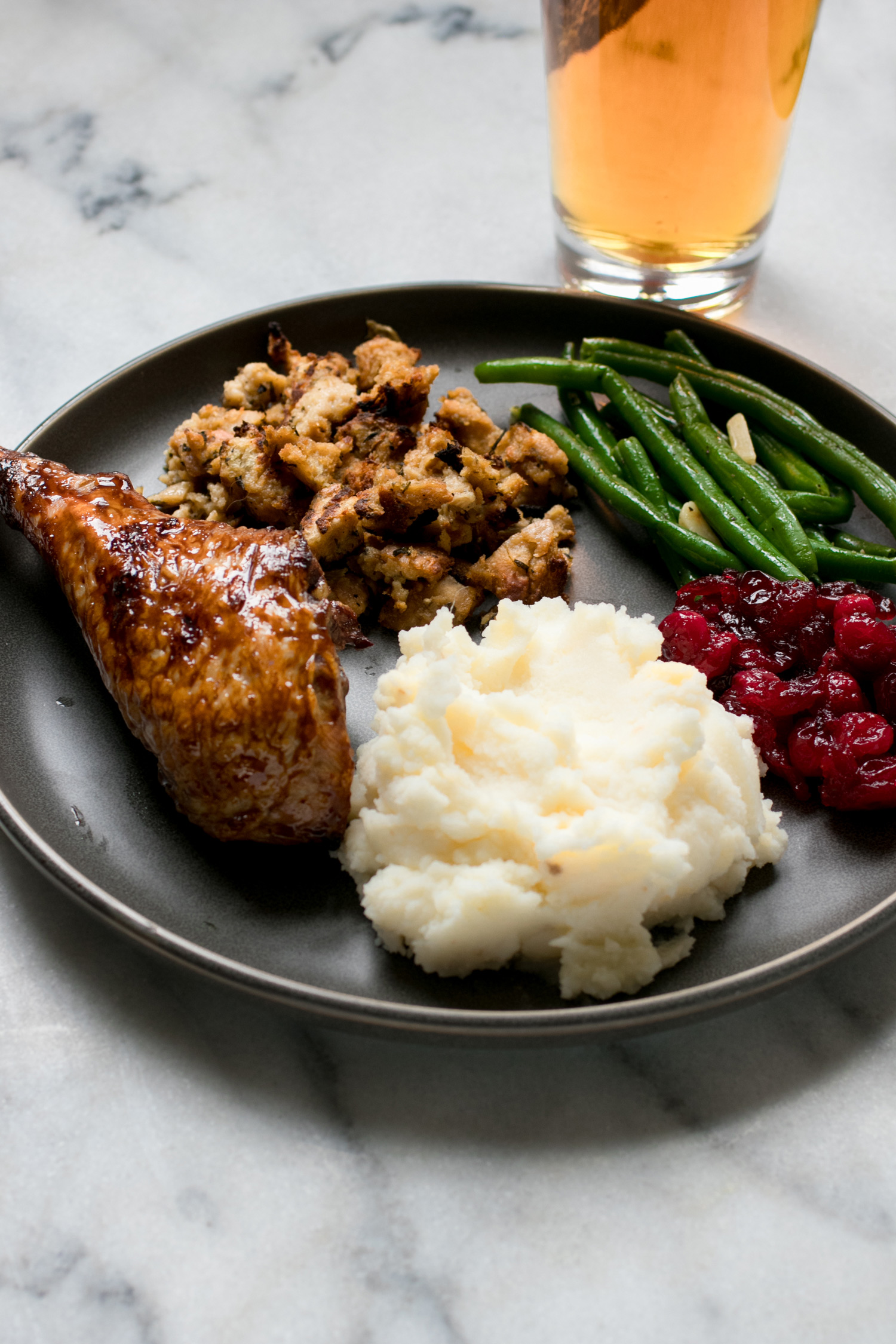
9. You don’t have to spatchcock your turkey. But if you do, it will taste better and cook faster.
If you’re going for the whole Norman Rockwell-style presentation of the whole roast beast to the table, good on you. But your turkey won’t taste as good.
“Spatchcock” is a fancy, silly-sounding word for taking the backbone out of your turkey so it cooks evenly. Also known as butterflying, this eliminates the inner cavity and puts all parts in the same plane, so that both the white and dark meat are done at the same time.
“What time is that,” you ask? Quite faster than the four to five hours standard for a normal gobbler. Depending on the size, the whole thing could take as little as 90 minutes, which (blessed be!) frees up the oven for other dishes. It also means the whole turkey cooks evenly, and all the skin is exposed and available for crispiness. A win for both dark and white meat fans.
Bonus points: you now have an extra turkey back to enhance your gravy.
10. The cooked turkey should rest for at least 45 minutes before carving. An hour is even better.
Yes, it will still be hot, and yes, it will keep cooking as it rests. This also means you need to take it out of the oven before it reaches your intended temperature. If you’re shooting for 165°, take it out at 155°.
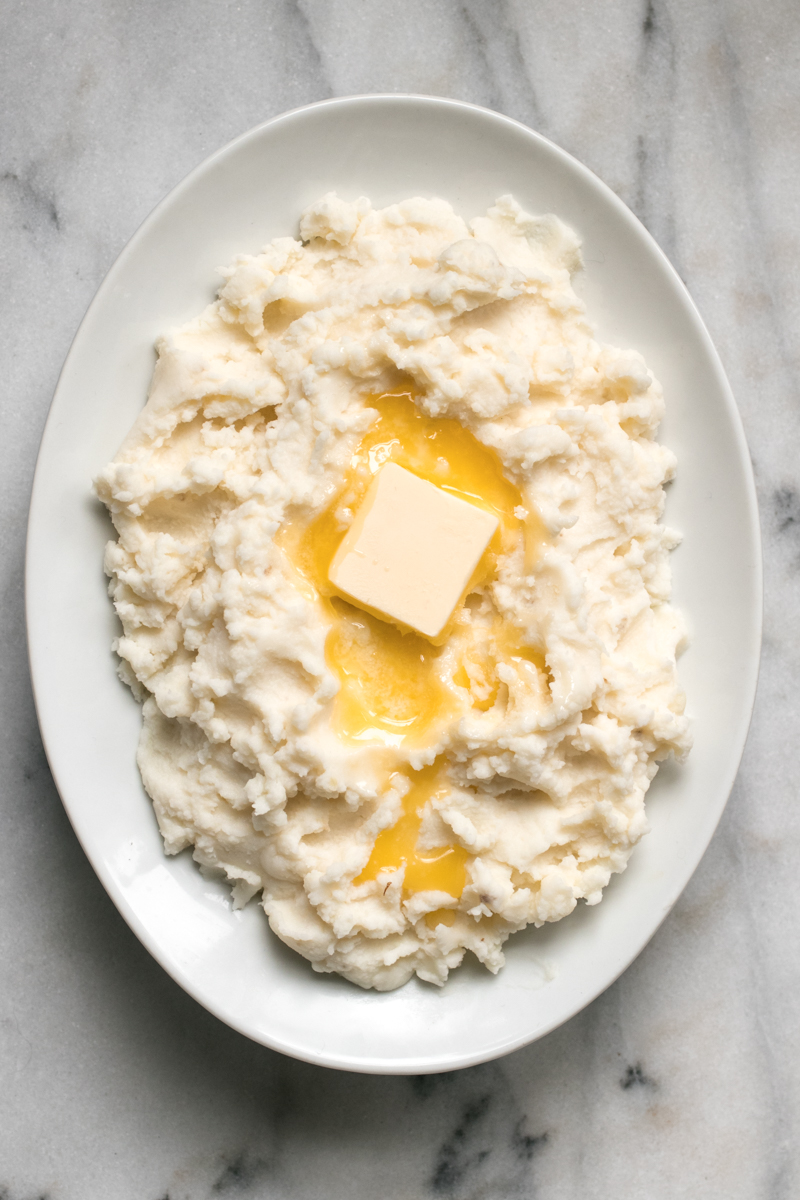
Part III: Side Dishes are the Supporting Cast that Actually Steal the Show
11. When it comes to mashed potatoes, you want more butter, less milk.
The classic Thanksgiving side dish – and, for my money, the single best part of meal – is a deceptively simple combo of boiled potatoes, butter, whole milk, and salt. If you want them to taste truly amazing, be sure to first dry the potatoes in the pan by cooking away any excess water, then mix in a generous helping of butter and just a splash of milk. The butter provides flavor, while the milk or cream, which helps to create a nice texture, might dull the potato-y taste.
TL;DR: you can never add too much butter, but you can add too much milk.
Sounds a little too good to be true, right? But it's mostly accurate! In those days, it was really hard to find safe drinking water, especially during a long sea voyage. So beer (and wine) was the primary source of hydration, because it tended to inhibit the growth of dangerous microorganisms. From Mort's Relation, Edward Winslow's 1620 account of the landing: “… we could not now take time for further search or consideration, our victuals being much spent, especially our beer …”
Read more here, here, and here.

12. Stuffing the bird is never worth it.
Salmonella is real, people. And Thanksgiving is its favorite holiday, too. Cooking a whole beast to proper temperature, without drying it out, is hard enough. Filling it with germ-soaked bread chunks is only asking for more headaches. Cook the stuffing with plenty of already-made rich turkey stock in a baking dish alongside the turkey. This let it get crispy, and develop more flavor than anything steamed inside a bird.
If you absolutely can't conceive of a stuffing without a turkey (or vice versa), cook the two items separately, then put the stuffing inside the turkey while it sits through its pre-carve rest. That’s more than enough time for the flavors to combine.
13. Once the sink starts getting full, the whole system crashes.
Stress less. Keep the dishwasher running so it's clean and ready and waiting.

14. You are not too tough to wear an apron.
Professional chefs wear aprons. They know what they're doing. You should dress like you know what you're doing. If you don't have one, here are two stylish, affordable options that can be at your house in two days:
15. Side dishes are the answer to “what can I bring?”
The cook controls the standards: turkey and gravy, mashed potatoes, stuffing, cranberry sauce. When people ask what they can contribute, let them do a vegetable side or simple dessert. Whether or not they can actually cook doesn’t matter. You’ve got the classics covered, so give others a chance to bring their A-game. If they succeed, it’s a win-win. If not, practice your 'courtesy bite'.
16. Good gravy fixes all mistakes. Make lots.
There will be leftover turkey. Plenty of sides will not get finished. But what’s the one thing that always runs out first? Gravy. It’s (literally) the special sauce that rights all wrongs on the plate, adding moisture where there's dryness, flavor to the bland. Gravy turns a disparate, guest-contributed batch of side dishes into a composed plating.
To make it, you’ll want all the drippings from the roast turkey and bit of that turkey stock you made earlier. Pour all the drippings out of the pan, allow it to settle, then add in ⅓ cup of the fat back in. (It’ll be on top). Sprinkle in an equal part of flour, and cook over low heat the mixture forms a paste and everything becomes golden brown and smells amazing.
Now, deglaze the pan by adding a splash of liquid into the pan to loosen up all the flavorful brown bits on the bottom. You can use stock, wine, apple cider, Sherry, or whatever is wet and non-toxic in your kitchen. I’ll likely use what’s nearby: a beer.
Now, slowly add in the non-fat part of the drippings, whisking constantly to combine (and avoid those dreaded lumps). Then, add additional turkey stock until your gravy is the desired consistency. Season with salt and lots of black pepper.
17. Always make the mashed potatoes well before dinner time.
Unlike many dishes, smashed spuds can easily be cooked first thing in the morning, and brought back to proper temp just before dinner. You can reheat them in a sauce pan by stirring constantly with a bit more butter, or gently in the microwave, or even keep them warm all afternoon in a slow cooker. There is no reason to be stressing about these when it comes to game time.
Perhaps you're old enough to remember the day in 1992 when vice-presidential candidate Dan Quayle mistakenly corrected a grade-schooler's spelling of “potato” by adding an 'e' at the end?
Quayle's gaffe was widely ridiculed, and he never lived it down. But it's a little-known fact that he was just reading the 'correct' spelling off a cue card provided by the school!
Yes, he probably should have known better, but let's be honest, it's a hard word to spell! Why is the plural of 'potato' spelled 'potatoes' instead of 'potatos'? After all, 'burrito' doesn't turn into 'burritoes' when you pluralize it. Neither do you write 'tacoes' or 'banjoes' or 'volcanoes'!
Ahh, but yes to 'torpedoes' and 'echoes' and 'vetoes'.
Why is it so? No reason that I can divine. It's just English being English. Weird.
Part IV: The Big Day
18. The only acceptable thing on the TV is football
Okay, you can be cool and let the kids watch the parade early in the day, but other than that, everyone’s a football fan on Thanksgiving. Keep the volume low, so it’s more of a “check in on the score” situation than full-on sports bar, and provides just the right ambience.
But, for reals, thanks givers, the game goes off during dinner. Not just muted, but powered off. Turn it back on during dessert, which you can eat wherever you decide (including on the couch). Because this is America. (We will also accept a post-meal viewing of “Planes, Trains, and Automobiles,” after dinner, because, c’mon – it's a classic.)
19. Skipping breakfast is an amateur move.
Yeah, you will be facing down a multi-thousand calorie meal at turkey time. But, if you forget to fill your tank in the morning, you’re setting yourself up to fail. First, if you’re cooking, you need to concentrate and be on your A-game. But more importantly, without breakfast in your tummy, you’re going to be so hungry before the main meal that you'll start grazing … on that turkey you’re carving, on that steaming pan of cornbread and sausage dressing, and so on. By the time you’ve filled your plate for dinner proper, you’ll already be full. Don't be fooled, friends. Fuel up first thing, and still enjoy that complete plate you've totally earned.
Letting lunch go, on the other hand, is totally okay. The snacks will be more than enough.
20. Get your body moving.
Yeah, it's a laid-back holiday, and no, you don't need to feel bad about it. But you know what feels good, on a day when most of your time is going to be sedentary? Moving. Your. Body.
Whether it's a Turkey Trot in the morning, a game of flag football with your nieces and nephews, or just a mid-afternoon walk around the neighborhood, find a way to move about a little. You'll be glad you did.
21. The food is complicated. Keep the drinks simple.
You will not be shaking cocktails to order. You will not be infusing syrups or making sure the mixers are refreshed. And most importantly, you will not be emptying your liquor cabinet just because you agreed to host this year.
Instead, you will hand your guests a drink and offer them a basic appetizer the second they arrive. This keeps them happy, and out of the kitchen. There’s no reason to complicate the day an more than it needs to be, so opt for something on hand that’s cold and ready to go. Sparkling apple cider for the kids, and beer for the adults.
Part V: Finish the Meal
22. Change your clothes before dinner (it should not involve a tie).
Button down. Sweater. Chinos. Dark socks. Eat.
23. Carve the bird.
Carving the finished animal, like changing a flat tire or building a campfire with a single match, is an essential, need-to-know skill. Thankfully (get it?), it’s not hard once you think about how anatomy works. Just keep this in mind: the turkey’s body bends where yours does, and to break it down, you just have to cut through those joints.
1) Grab the end of the drumstick, and use a carving knife to slice through the skin through the area between the leg and the body. Pull the leg away from the breast, and slice through the joint (in between the bones) where the thigh meets the body.
2) Locate and cut through the knee joint where the leg and thigh connect. There's only one, and you'll know it when you find it. Remove the meat from the thigh bone, then from the leg. (Or munch the drumstick whole, King Henry-style. It's your holiday.)
3) Repeat steps 1-2 with the other leg quarter. Arrange all dark meat on a platter.
4) Next, attack the wing by running your knife where it meets the body. Pulling the wing tip out will reveal the joint. Slice the wings into three pieces, and repeat.
5) To tackle the breast, start with your knife parallel to the breast bone. Slice down one side of the breast, following the bone, pulling away the breast meat with your other hand. As you get deeper, the breastbone will start to curve out. Follow it down and out, and remove the whole breast.
6) Slice the breast half across the grain into 1/2-3/4″, preserving the skin as best as possible. Repeat with the other breast, and place next to the wings on the platter.
Let your turkey rest for an hour.
24. You must give a toast. It should say something about what you're thankful for.
It's not your duty as the host. It's your privilege.
25. Don’t decorate the table. You already have a centerpiece: the food.
No cornucopias filled with produce or shatter-able turkey-shaped napkin holders. You want serving dishes of real, cooked vegetables and actual turkey on a platter. Anything that’s not food or used for the serving of food has no place on a straightforward Thanksgiving table.
This also saves you time and money. Win win.
26. You might only use this tool once a year. It’s still worth owning.
All hail the gravy separator. This majestic device uses alchemy and a little bit of altruistic voodoo (read: science) to organize the liquid gold that resides in your roasting pan into its two very key, very delicious parts: water-based drippings, and fat-based flavor.
Pour the entire contents of your turkey in, and let nature do its magic to divide the two. Use every last drop of each.
27. Your leftover turkey carcass still has a lot to give.
You paid for the whole thing. You should use it. Once dinner is over, and you’ve removed every last bit of usable meat and skin from his corpus, submerge your friend and a bit more onion, carrots, and celery into a stock pot. Turn the oven to 175°F, or as low as yours will go, and let it slowly cook away all night. The next morning, your house will continue to smell amazing, and you’ll be left with the makings of seriously good turkey chili, a pot of beans, posole, congee, or whatever you can dream up.

This post is sponsored by Ballast Point Brewing Company. Thanks for supporting brands that believe, like we do, that high quality, well-crafted food and beer are what makes every holiday feel just right. #for21andover

